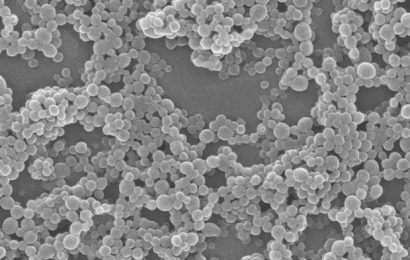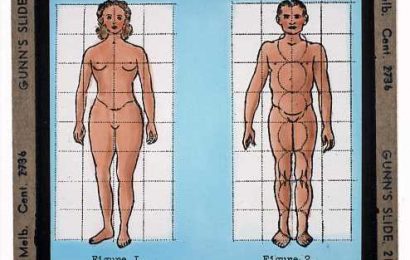A DNA paternity test works a lot like other genetic tests, such as to discover distant relatives, ancestral origins, or even health risks. Now available over the counter, these DNA tests compare samples of a father and child’s genetic code to provide an accurate indicator of paternity. DNA paternity testing is a very reliable way to establish parentage, as tests using current technology are nearly 100% accurate, according to a 2013 study published in the journal Genetics in Medicine.
DNA paternity testing obviously isn’t for everyone, but as these kits become increasingly accurate, they serve as a way to determine parentage in all manner of circumstances – from lawsuits to lineage. To give you a better idea of whether it’s something you should consider, here is a guide to how paternity testing works and what kinds of tests are available.
- Related: How to protect your DNA data
How to choose a DNA paternity test
For those looking to take a DNA paternity test, the market is flooded with options. A genetic test can be performed at clinics, hospitals, or even with at-home kits. Because the tests are all carried using the same laboratory techniques, as long as the test is processed at a lab accredited by the American Association of Blood Banks (AABB), the accuracy of the results won’t vary much between testing centers and at-home kits.
The type of test you choose will depend on the purpose of the test results. DNA tests taken for peace of mind can be performed through at-home test kits, such as HomePaternity, where either saliva or cheek swabs are collected, packaged, and sent to a testing site for analysis.
If the test is needed for legal purposes, then it has to be performed at a hospital or a clinic. According to LabCorp, a DNA testing laboratory with locations throughout the US, the difference between an at-home test and one offered at a clinic, is that the clinic-based test will have an established chain of custody. This means that the laboratory itself verifies the identities of all sample donors, and every time the sample changes hands that change is recorded. This is crucial if the paternity test results will be used in court.
Paternity testing while pregnant
Paternity testing can be performed very early, even during pregnancy. In this case, the test will be conducted at a hospital and the DNA samples for genetic tests during pregnancy will be collected in one of two ways.
The first is chorionic villi sampling, which can happen between 10 and 13 weeks into pregnancy. This process involves inserting a needle into the uterus through either the vagina or the abdominal wall to remove a small piece of the placenta, according to the Cleveland Clinic. This will contain large amounts of the fetus’ DNA that can be easily and quickly analyzed.
A much less invasive technique involves drawing a sample of the mother’s blood, which contains trace amounts of cell-free fetal DNA.
These samples, whether collected in a hospital, clinic, or at home, are then sent to a lab for analysis.
- Related: Prenatal genetic screening tests: benefits & risks
How do paternity tests work?
“For a paternity test, what is usually used is called Short Tandem Repeat, or STR tests,” says Arnab Chowdry, biophysicist and VP of Genetic Technology for 23andMe.
Chowdry explains that STRs are long regions in the human genome composed of short segments, typically two to four letters long, that just repeat over and over. Because these regions mutate from time to time, they vary widely in length from person to person.
In a way, they can act as a “genetic fingerprint,” because every person is going to have the same STR segments, but the combination of STR lengths a person inherits will be unique. More importantly, because 50% of a child’s DNA comes from their father, roughly 50% of these STRs should be shared between them.
Next these segments are measured by using a process called Polymerase Chain Reaction, or PCR (yes, the same as a PCR test for COVID-19). This is a process that geneticists use to “amplify” specific regions of DNA. In the case of paternity tests, certain STR regions are copied over and over again.
By the end of this process, the overwhelming majority of the DNA in the sample will be STR copies made from the original DNA. For analysis, these amplified STRs are run through a process called Gel Electrophoresis, which uses an electric current to sort the STRs by length.
Think about how rocks of various weights might behave on the bed of a fast-flowing stream. The smaller and lighter rocks will be pushed farther and faster than the bigger and heavier ones. The same goes for longer and shorter STRs. Once the STRs are separated, the patterns from the child can be matched to patterns seen in their potential parents.
STRs are not the only genetic regions that can be used for paternity tests, but they are by far the most commonly used for this purpose. According to a 1997 study in the International Journal of Legal Medicine, genetic sequences on the Y chromosome can be amplified through PCR as well, depending on the chromosomal sex of the child.
As far as genetic tests go, paternity tests are rather straightforward. “It doesn’t tell you much about what’s going on in the genome,” says Chowdry, “It just says, ‘this person is definitely different from this other person,’ and that’s what you want out of a paternity test.”
Modern genetic testing techniques, like those used Chowdry’s labs, make use of microarray testing. According to the NIH, this is a microchip-based technique which is capable of reading hundreds of pieces of genetic material at once. This is not only capable of establishing parent-child relationships, but also of using genetic similarity to establish more distant and even ancestral familial relationships between people. While using DNA microarrays would certainly be capable of establishing paternity, according to Chowdry, these techniques would be “overkill.”
- Related: How does DNA know which job to do in each cell?
History of paternity testing
A hundred years ago, you couldn’t put much stock in DNA testing for paternity. Back then, our knowledge of human genetics was still in its infancy, and while scientists could deduce how genes pass from parent to child, they couldn’t yet observe them directly.
The earliest parentage tests involved taking blood samples from a child, the child’s mother, and that child’s potential fathers. Because genes are passed from parent to child, it would be possible to rule out potential fathers by looking at the child’s blood type. For example, if the mother has type A blood while the child has AB, it is reasonable to predict that the child’s father has type B blood.
Given the limited variety of blood types, if all the potential fathers have the same or similar blood types, little could be inferred from the test. While paternity tests can be performed this way, much more accurate tests have since been developed.
In the 1950s, scientists began performing the first prenatal genetic tests by gathering samples of amniotic fluid to test for chromosomal abnormalities. After the discovery of DNA’s structure in 1953, geneticists began decoding the information contained within the molecule by looking at the individual letters – those As, Ts, Cs, and Gs – that spell out a person’s genetic traits.
Cameron Duke
Live Science Contributor
Cameron is a contributing writer covering life sciences for Live Science. He also writes for New Scientist as well as MinuteEarth and Discovery’s Curiosity Daily Podcast. He holds a master’s degree in animal behavior from Western Carolina University and teaches at the University of Northern Colorado.
Source: Read Full Article



